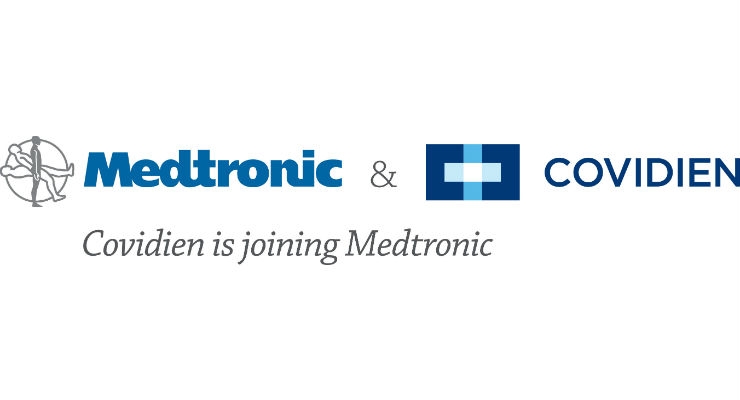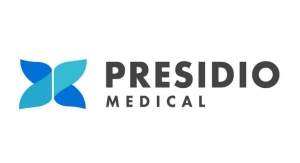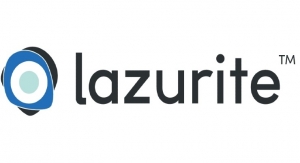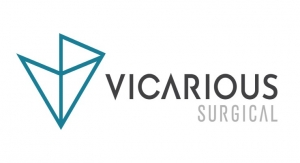Bryan Hughes, P&M Corporate Finance07.20.16
For much of the past decade, medical device companies have reshaped their businesses through acquisitions, divestitures, and portfolio realignment. As the realities of the Affordable Care Act, payer and provider consolidation, and continued pricing pressure (along with other headwinds) have become more transparent, medical device firms have sought to offset declining growth through multiple non-organic means. No event over the last two years illustrates the rationale and downstream consequences of this strategy quite as acutely as Medtronic plc’s acquisition of Covidien. On an otherwise quiet summer weekend in 2014, the two companies shocked the medical device community by announcing a $42.9 billion merger.
The mere size of the transaction moved Medtronic up two spots on Medical Product Outsourcing’s annual ranking of the 30 largest medical device companies, surpassing both GE and Siemens. The company now trails only Johnson & Johnson, itself transformed through multiple acquisitions and divestitures, in the most recent ranking.
Industry analysts applauded the Covidien transaction, which built upon three key tenets—therapy innovation, globalization, and economic value. In prepared remarks, Covidien’s then CEO Joe Almeida stated, “Covidien and Medtronic, when combined, will provide patients, physicians, and hospitals with a compelling portfolio of offerings that will help improve care and surgical performance. This transaction provides our shareholders with immediate value and the opportunity to participate in the significant upside potential of the combined organization.”
Much of this promise has proven out; the transaction truly was transformational, affording shareholders the value upside from the significant strategic synergies the deal creates. On a combined basis, the company now has a dozen billion-dollar-plus franchises, an amazing accomplishment, considering Covidien and Medtronic were surprisingly non-competitive with limited product overlap as standalone businesses. As important, however, the deal brought together very complementary approaches and philosophies toward end markets, research and development, and global markets. The much larger Medtronic has grown its revenue to more than $28 billion over the last two years, while its share price has increased 37.5 percent over the same time period. On a relative basis, the S&P 500 squeaked out a mere 6.3 percent gain during that time.
As is the case with many other large transactions across all industries, Medtronic made the valuation it placed on Covidien work, in part, through setting aggressive synergy targets. The two companies outlined more than $850 million in annual savings to be fully achieved by the end of Medtronic’s 2018 fiscal year. This transaction is in no way unique in its pursuit of such a high level of cost-savings from the combined entities; whether from a seller or buyer perspective, the mention of specific transaction synergies is almost always mentioned in describing the transaction. Sometimes cost synergies can make a deal work financially; often, they are the strategic justification for pulling the trigger—the classic one plus one equals something greater than two. In medical technology transactions, operational synergies are pervasive, and their impact on the medical product outsourcing universe is real. Over the course of 2014 and 2015, PMCF sampled nine transactions that collectively were expected to generate more than $2.1 billion in cost synergies.
In each transaction, the specific language used to describe the areas of expected cost savings became a bit blurred. However, from back-office redundancies and facility optimization to a shift to lower cost regions, all functional areas have been outlined as opportunities to achieve meaningful transaction synergies. Often, operations and the supply base absorb the largest impact of these efforts. In translating the combined $2.1 billion of cost savings into relative terms, it represents only 7 percent of the combined cost of goods sold (COGS) of the sampled companies. But when compared to estimates of “outsourced” spending, which is where we would expect operational synergies to hit hardest, that number increases to 25 percent.
While the entire $2.1 billion is obviously not going to come entirely from the supply chain, in a vacuum, any meaningful percentage of that number would dramatically slow growth in the outsourcing market. As certain commodities are consolidated, and redundant suppliers are “optimized,” we believe the market will begin to experience an increased level of transaction activity among the supply base. Even the strongest companies will pursue acquisitions to gain scale, extend capabilities and geographic footprint, and provide higher value services.
During Medtronic’s recent 2016 Investor Day held in New York City, Chief Financial Officer Gary Ellis outlined the company’s success in achieving its synergy target. Through the end of FY16 (ended April 29), Medtronic had realized more than $350 million in savings, with approximately $250 million in additional savings targeted in fiscal 2017 and 2018 respectively. Because of the limited product overlap between Medtronic and Covidien, only a small portion of this number—approximately $60 million—resulted from commercial activities, in this case the integration of similar peripheral vascular franchises. At the same time, SG&A expenses are expected to fall by approximately $420 million, including multiple redundancies in back office and other support functions, as well as the consolidation of more than 100 non-operations facilities globally.
Perhaps most relevant to the medical product outsourcing industry, supply chain and sourcing optimization synergies are expected to contribute an additional $370 million. These savings are coming from shared supplier rationalization, freight reductions through common contracts, value engineering, and an integrated transportation, logistics, and distribution footprint. Unfortunately for suppliers to the medical device industry, the long-term impact of these synergy numbers may only be the tip of the iceberg.
At the MPO Summit held last fall in Park City, Utah, I spoke on the parallels between the consolidation and purchasing pressure seen today in the medical device market and the experiences of automotive and aerospace industries 15 to 20 years ago. In 1998, following its acquisitions of McDonnel Douglass and Rockwell Collins, Boeing outlined an aggressive post-merger integration strategy to radically transform both how it manufactured commercial airplanes, and what the associated supply chain would look like.
The stated goal was that within four years, the company would cut 13,000 suppliers from its ranks. Once this effort gained momentum within the company’s Seattle, Wash., headquarters, though, cost-cutting targets ballooned and accelerated. By 2005, Boeing had moved its headquarters to Chicago, Ill., and had reduced its supply chain by nearly 24,000 suppliers—almost 80 percent of its 1998 base.
At the Summit, I proposed the idea that much like the experience of aerospace before, recent medical device transactions would trigger a much higher level of supplier consolidation than had been detailed in the aforementioned synergy targets. The prediction was based on the view that once integration consultants started digging into enough supply chain data to make a mere mortal’s head spin, it would create an environment for supplier rationalization well beyond what would be expected by the synergy targets. Depending on how cynical you are, once consultants start analyzing the data, it can often provide company executives either the strategic business case or the excuse to pursue such sweeping cost-saving initiatives.
While non-operational facility consolidation was targeted for more than $100 million in savings, optimization of Medtronic’s manufacturing plant network was estimated to initially generate just $5 million in cost savings following the Covidien acquisition. However, by the June 2016 Investor Day, the targeted cost savings from Medtronic’s manufacturing plant optimization had increased to more than $500 million. With echoes of Boeing in the late 1990s, in the same investor presentation, Medtronic characterized the Covidien synergies as the “catalyst for a long tail of leverage opportunities beyond FY18.”
Including the initial $850 million in synergies related to the Covidien acquisition, [through 2021, Medtronic now expects to cut SG&A expenses by $1.7 billion and COGS by more than $3 billion]. If successful, and accounting for the downward pressure from other items, this effort will generate an operating margin improvement of more than 650 basis points over this time period. While the SG&A leverage target and strategy is quite interesting, the pure scale of the COGS reduction targets and the potential impact on the broader medical product supply chain warrants a closer examination.
Bryan Hughes is a director of PMCF and leads the firm’s medical technology team. His practice focuses on assisting clients with M&A, leveraged buyouts, private placements, financings, valuation, and strategic consulting. His clients have ranged from global medtech companies to small, privately held businesses. Hughes also has completed transactions in the business services, consumer, and industrial sectors. He has written numerous articles and is a frequent speaker on healthcare investment banking topics.
The mere size of the transaction moved Medtronic up two spots on Medical Product Outsourcing’s annual ranking of the 30 largest medical device companies, surpassing both GE and Siemens. The company now trails only Johnson & Johnson, itself transformed through multiple acquisitions and divestitures, in the most recent ranking.
Industry analysts applauded the Covidien transaction, which built upon three key tenets—therapy innovation, globalization, and economic value. In prepared remarks, Covidien’s then CEO Joe Almeida stated, “Covidien and Medtronic, when combined, will provide patients, physicians, and hospitals with a compelling portfolio of offerings that will help improve care and surgical performance. This transaction provides our shareholders with immediate value and the opportunity to participate in the significant upside potential of the combined organization.”
Much of this promise has proven out; the transaction truly was transformational, affording shareholders the value upside from the significant strategic synergies the deal creates. On a combined basis, the company now has a dozen billion-dollar-plus franchises, an amazing accomplishment, considering Covidien and Medtronic were surprisingly non-competitive with limited product overlap as standalone businesses. As important, however, the deal brought together very complementary approaches and philosophies toward end markets, research and development, and global markets. The much larger Medtronic has grown its revenue to more than $28 billion over the last two years, while its share price has increased 37.5 percent over the same time period. On a relative basis, the S&P 500 squeaked out a mere 6.3 percent gain during that time.
As is the case with many other large transactions across all industries, Medtronic made the valuation it placed on Covidien work, in part, through setting aggressive synergy targets. The two companies outlined more than $850 million in annual savings to be fully achieved by the end of Medtronic’s 2018 fiscal year. This transaction is in no way unique in its pursuit of such a high level of cost-savings from the combined entities; whether from a seller or buyer perspective, the mention of specific transaction synergies is almost always mentioned in describing the transaction. Sometimes cost synergies can make a deal work financially; often, they are the strategic justification for pulling the trigger—the classic one plus one equals something greater than two. In medical technology transactions, operational synergies are pervasive, and their impact on the medical product outsourcing universe is real. Over the course of 2014 and 2015, PMCF sampled nine transactions that collectively were expected to generate more than $2.1 billion in cost synergies.
| Medtronic/Covidien | $850M |
| Thermo Fisher/Life Technologies | $350M |
| Zimmer/Biomet | $350M |
| Becton Dickinson/CareFusion | $250M |
| Cardinal Health/Cordis Corp. | $100M |
| Smith & Nephew/ArthroCare | $85M |
| Cyberonics/Sorin Group | $80M |
| Hill-Rom Holdings/Welch Allyn | $40M |
| Tornier N.V./Wright Medical | $45M |
In each transaction, the specific language used to describe the areas of expected cost savings became a bit blurred. However, from back-office redundancies and facility optimization to a shift to lower cost regions, all functional areas have been outlined as opportunities to achieve meaningful transaction synergies. Often, operations and the supply base absorb the largest impact of these efforts. In translating the combined $2.1 billion of cost savings into relative terms, it represents only 7 percent of the combined cost of goods sold (COGS) of the sampled companies. But when compared to estimates of “outsourced” spending, which is where we would expect operational synergies to hit hardest, that number increases to 25 percent.
While the entire $2.1 billion is obviously not going to come entirely from the supply chain, in a vacuum, any meaningful percentage of that number would dramatically slow growth in the outsourcing market. As certain commodities are consolidated, and redundant suppliers are “optimized,” we believe the market will begin to experience an increased level of transaction activity among the supply base. Even the strongest companies will pursue acquisitions to gain scale, extend capabilities and geographic footprint, and provide higher value services.
During Medtronic’s recent 2016 Investor Day held in New York City, Chief Financial Officer Gary Ellis outlined the company’s success in achieving its synergy target. Through the end of FY16 (ended April 29), Medtronic had realized more than $350 million in savings, with approximately $250 million in additional savings targeted in fiscal 2017 and 2018 respectively. Because of the limited product overlap between Medtronic and Covidien, only a small portion of this number—approximately $60 million—resulted from commercial activities, in this case the integration of similar peripheral vascular franchises. At the same time, SG&A expenses are expected to fall by approximately $420 million, including multiple redundancies in back office and other support functions, as well as the consolidation of more than 100 non-operations facilities globally.
Perhaps most relevant to the medical product outsourcing industry, supply chain and sourcing optimization synergies are expected to contribute an additional $370 million. These savings are coming from shared supplier rationalization, freight reductions through common contracts, value engineering, and an integrated transportation, logistics, and distribution footprint. Unfortunately for suppliers to the medical device industry, the long-term impact of these synergy numbers may only be the tip of the iceberg.
At the MPO Summit held last fall in Park City, Utah, I spoke on the parallels between the consolidation and purchasing pressure seen today in the medical device market and the experiences of automotive and aerospace industries 15 to 20 years ago. In 1998, following its acquisitions of McDonnel Douglass and Rockwell Collins, Boeing outlined an aggressive post-merger integration strategy to radically transform both how it manufactured commercial airplanes, and what the associated supply chain would look like.
The stated goal was that within four years, the company would cut 13,000 suppliers from its ranks. Once this effort gained momentum within the company’s Seattle, Wash., headquarters, though, cost-cutting targets ballooned and accelerated. By 2005, Boeing had moved its headquarters to Chicago, Ill., and had reduced its supply chain by nearly 24,000 suppliers—almost 80 percent of its 1998 base.
At the Summit, I proposed the idea that much like the experience of aerospace before, recent medical device transactions would trigger a much higher level of supplier consolidation than had been detailed in the aforementioned synergy targets. The prediction was based on the view that once integration consultants started digging into enough supply chain data to make a mere mortal’s head spin, it would create an environment for supplier rationalization well beyond what would be expected by the synergy targets. Depending on how cynical you are, once consultants start analyzing the data, it can often provide company executives either the strategic business case or the excuse to pursue such sweeping cost-saving initiatives.
While non-operational facility consolidation was targeted for more than $100 million in savings, optimization of Medtronic’s manufacturing plant network was estimated to initially generate just $5 million in cost savings following the Covidien acquisition. However, by the June 2016 Investor Day, the targeted cost savings from Medtronic’s manufacturing plant optimization had increased to more than $500 million. With echoes of Boeing in the late 1990s, in the same investor presentation, Medtronic characterized the Covidien synergies as the “catalyst for a long tail of leverage opportunities beyond FY18.”
Including the initial $850 million in synergies related to the Covidien acquisition, [through 2021, Medtronic now expects to cut SG&A expenses by $1.7 billion and COGS by more than $3 billion]. If successful, and accounting for the downward pressure from other items, this effort will generate an operating margin improvement of more than 650 basis points over this time period. While the SG&A leverage target and strategy is quite interesting, the pure scale of the COGS reduction targets and the potential impact on the broader medical product supply chain warrants a closer examination.
- Manufacturing plant optimization target of $500 million. Of its roughly 90 manufacturing sites, Medtronic expects it may reduce that number to 50. Manufacturing will be focused around a smaller number of strategic locations, and the company will support the development of local-for-local manufacturing, particularly where there is a strong local preference or the ability to leverage government support.
- Lean manufacturing and cell operating system target of $1.2 billion. Much of this savings is expected to result from the implementation of the Medtronic Operating System across the organization.
- Sourcing target of $1.2 billion. To put this number in perspective, $1.2 billion would represent over 50 percent of many estimates of Medtronic’s outsourced spend. The key focus areas of this initiative are outlined as renegotiation of supplier agreements and identification of alternative supply sources. Coupled with the local-for-local initiative outlined previously, this effort will likely result in a dramatic reduction in the size of Medtronic’s supply base, with new sourcing focused on larger suppliers with truly global capabilities.
- Design for Manufacturability target of $100 million. Savings will be driven by value engineering and supplier collaboration for design for manufacturability.
- Medtronic’s acquisition of Covidien certainly was not the first transaction to reshape the medical device landscape, and it won’t be the last. In fact, in late April of this year, Abbott announced its $25 billion acquisition of St. Jude Medical Inc. in a deal the two companies claimed will create “a premier medical device leader.” In that instance, transaction synergies are estimated at over $500 million.
Bryan Hughes is a director of PMCF and leads the firm’s medical technology team. His practice focuses on assisting clients with M&A, leveraged buyouts, private placements, financings, valuation, and strategic consulting. His clients have ranged from global medtech companies to small, privately held businesses. Hughes also has completed transactions in the business services, consumer, and industrial sectors. He has written numerous articles and is a frequent speaker on healthcare investment banking topics.




























